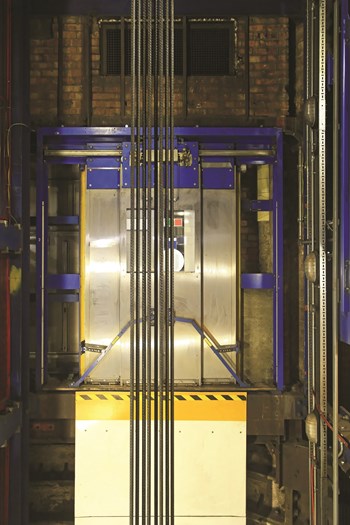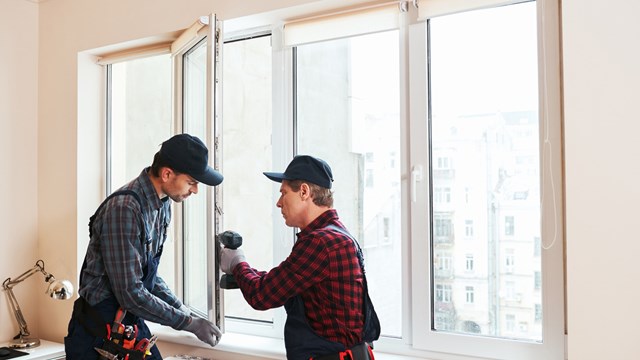
Building amenities such as elevator systems are often taken for granted. But, elevators are for more than just avoiding a workout and creating awkward silences between neighbors; they accommodate residents unable to climb stairs and are critical for deliveries and facilitating maintenance workers. At a certain point, no matter the age of the building, the elevator system will need maintenance or even replacement. The key is identifying signs of wear and tear before a breakdown occurs.
“An elevator in a typical residential building will about last about 15 to 20 years,” says Tommy Curran, president of North American Elevator in Linden. “The considerations on the life of an elevator would be the environment; an elevator at JFK won’t last as long as one in an apartment building, [because of] how much the elevator travels, and how clean it is.”
In the case of elevators, cleanliness isn't just about keeping those who use them happy. A consistently cleaned elevator extends its useful life. “To keep an elevator running it should be cleaned, like your house. You should do housekeeping, elevator shafts may need to be cleaned depending on the conditions of the environment,” says Curran.
Maintenance schedules are central to elevators for this very reason. “An elevator is a machine and as such should be maintained according to the use it gets. If you have an elevator that runs once a day it should be maintained less than one that runs constantly. An apartment building though, the standard would be monthly maintenance,” says Bob Shipley, general manager of RMR Elevator Company in Linden.
Even if a building owner is diligent when it comes to maintaining their elevators, there may come a time when it becomes unreliable and the down time is increased—this could require an overhaul.
“Any modification to an existing system is characterized as a modernization, which can be partial or full. A job is considered new construction when new rails are added to an existing job, or it is installed from the ground up,” explains John Miller, director of operations for the Liberty Elevator Corporation in Paterson. He added that hydraulic elevators typically last between 25 to 30 years. Traction applications, he noted, have controllers that last 25 to 30 years as well, although the machinery may last even longer. The lifespan of elevator ropes are typically 10 to 15 years.
“If you’re adding an elevator to an existing building, this would be considered new construction, otherwise you can replace all elements of an elevator, besides the rails, and it would be considered a full modernization,” says Miller.
Government Oversight
It’s not a question of “if” an elevator will need maintenance, but “when,” so it is always best to be proactive. While this includes yearly inspections by certified professionals, when the time comes to make a change, the state gets involved.
“In New Jersey, if you are doing a modernization, the work has to comply with the code that applies at the time. Elevators are inspected by the code under which they are installed, so if you have an elevator that was installed in 1945, it is subject to the 1945 elevator safety code. With a couple of select things that are retroactive, such as telephones and other safety guidelines,” says Shipley.
“In the state of New Jersey, you need to have an annual inspection of all elevators and the final inspection test needs to be in front of a state inspector. Any major component replacement needs to be filed with the state and elevators must undergo a full load test,” says Curran.
Modernization and Going New
If a building deems it necessary to undertake a capital improvement project such as replacing an elevator system, the building not only has to adhere to city codes, but is charged with hiring the right contractor and consultants for the job.
“Sometimes an elevator company doesn’t have the skill set to fix an elevator, so parts need to be replaced or sometimes the parts are just so broken they cannot be fixed,” says Curran.
“Mechanical parts can be repaired, so long as they are not too damaged, but the fly in the ointment are the microprocessors. Since they advance every 5 to 10 years, they often need to be replaced as they quickly become obsolete,” says Curran. “But, if you don’t change the cab the people in the building feel like you didn’t do anything, so you often have to either replace or remodel the cab.”
Depending on the size and scope of the building and its elevator system, there are a wide range of issues related to how old equipment is shut down, dismantled and removed. The manner in which new equipment is brought in, installed, and brought online is equally challenging.
Miller explains that in most cases a team of two professionals will assess the elevator systems. The first step is securing the hoistway to prevent any unintended movement. Next, the controller, the driving machine, and door equipment would be dismantled and removed. In some cases, machine room walls or ceilings have to be removed in order to access the old equipment. Installing new equipment installation is similar. Many buildings also have a “scuttle hole” in the elevator equipment room that allows workers to hoist the old equipment out through a lower floor, and use the same hole to hoist the new equipment in. In other cases, cranes are positioned on building roofs to aid in the construction.
“When a new machine is installed it is followed by the controller, where minor wiring would be performed to put the elevator in a temporary run position, which allows the men to manually move the elevator within the hoistway to complete the door operator work, wiring, and miscellaneous hoistway work,” explains Miller. “Then, they would fully wire the elevator to the new controller for automatic use. It is then tested by the inspector and any relevant agencies under a full load condition. All safety devices are checked and overall elevator performance is tested. The inspector then supplies a certificate of occupancy and the elevator is turned over for passenger use.”
The costs to modernize an elevator varies widely based on scope, building conditions, and locale. As such, it is difficult to provide actual costs. In order to provide scope, Curran offered a hypothetical project. “For instance, if an elevator in a 12-story building gets a modernization, if you only replace the computer, the cab, and all the electrical wires it’s about $150,000. If you go a step further and replace the machine you’re looking at about $200,000 or so,” says Curran.
Miller adds that it is difficult to speculate on costs because there are so many variables. “Depending on the building usage, rise, equipment, cab finishes, etc., the price can vary dramatically. Many times, an elevator consultant is hired to perform a comprehensive survey of the building and determine what extent of a modernization is needed,” he says, “For new installations, the architects, engineers, consultants, and elevator company collaborate to determine the best application for a building’s needs and budget.”
Managing Residents’ Expectations
If it is determined that elevator maintenance is required, building administrators and board members are required to prepare residents for the inevitable disruptions and to keep them informed as the project progresses. Whether a repair or a replacement project, experts advise providing as much notice as possible.
“A 12-story elevator, once you have all the parts, will take about 10 weeks per elevator for a major modernization. It usually takes about 16 weeks, from the signing of the contract to the start of the installation. The building owners should start at least five to six months in advance, due to the interview and bidding process,” says Curran.
“The most minor of modernizations, a replacement of a mechanical safety edge, for example, would be about four hours or so. Conversely, a major modernization, let’s say modernizing the control system, hoistway doors, door operating equipment, rewiring the elevator, you’re looking at a few weeks worth of work,” says Shipley.
“You wouldn’t want to be modernizing an elevator on the Jersey Shore in the summer or a ski area during the winter, you want to do it when your traffic would be at its lowest so as to inconvenience the smallest number of people,” says Shipley.
By scheduling elevator modernization work during the time of the year the fewest people are in the building, you can avoid inconveniencing anyone and as planning needs to start months in advance it will allow those who depend on the elevator the most, those who cannot use the stairs due to illness or injury, to arrange a vacation or to stay with a friend.
W.B. King is a frequent contributor to The New Jersey Cooperator. Staff writer John Zurz contributed to this article.






Comments
Leave a Comment